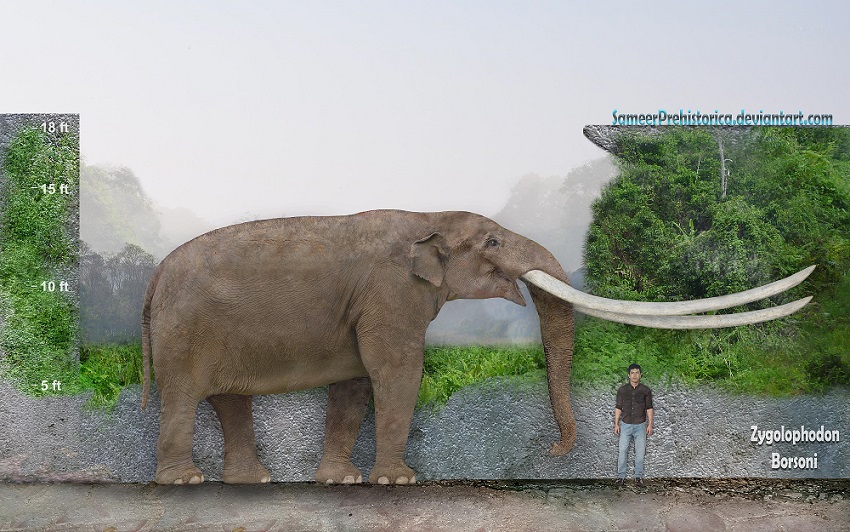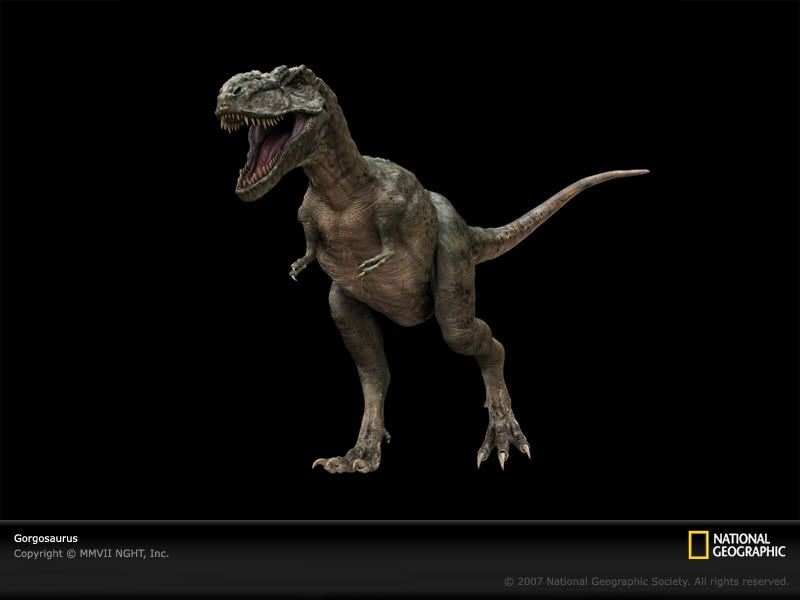Post by dinosauria101 on Mar 16, 2019 16:32:56 GMT 5
Mammut borsoni
Mastodons (Greek: μαστός "breast" and ὀδούς, "tooth") are any species of extinct mammutid proboscideans in the genus Mammut, distantly related to elephants, that inhabited North and Central America during the late Miocene or late Pliocene up to their extinction at the end of the Pleistocene 10,000 to 11,000 years ago. Mastodons lived in herds and were predominantly forest dwelling animals that fed on a mixed diet obtained by browsing and grazing with a seasonal preference for browsing, similar to living elephants. Modern reconstructions based on partial and skeletal remains reveal that mastodons were very similar in appearance to elephants and, to a lesser degree, mammoths, though not closely related to either one. Compared to mammoths, mastodons had shorter legs, a longer body and were more heavily muscled, a build similar to that of the current Asian Elephants. M. borsoni, is known from 30–40-year-old males that were 3.9–4.1 metres (12.8–13.5 ft) tall and 14–16 tonnes (14–16 long tons; 15–18 short tons) in weight. A large species Mammut during the Pilocene, that was fossil recond in Europe and Asia. According to Greek fossils, we know Mammut borsoni shoulder high about 3.5 m, incisors about 4.3 m. In China,also found Mammut borsoni, but most material is only single molar, the best material is a jaw.

Gorgosaurus libratus (pack of 5)
Gorgosaurus is a genus of tyrannosaurid theropod dinosaur that lived in western North America during the Late Cretaceous Period, between about 76.5 and 75 million years ago. Fossil remains have been found in the Canadian province of Alberta and possibly the U.S. state of Montana. Paleontologists recognize only the type species, G. libratus, although other species have been erroneously referred to the genus. Like most known tyrannosaurids, Gorgosaurus was a bipedal predator weighing more than a metric ton as an adult; dozens of large, sharp teeth lined its jaws, while its two-fingered forelimbs were comparatively small. Gorgosaurus was most closely related to Albertosaurus, and more distantly related to the larger Tyrannosaurus. Gorgosaurus was smaller than Tyrannosaurus or Tarbosaurus, closer in size to Albertosaurus and Daspletosaurus. Adults reached 8 to 9 m (26 to 30 ft) from snout to tail. Paleontologists have estimated full-grown adults to weigh about 2.5 tonnes (2.8 short tons), perhaps approaching 2.8–2.9 tonnes (3.1–3.2 short tons). The largest known skull measures 99 cm (39 in) long, just slightly smaller than that of Daspletosaurus.

Credit to Wikipedia
Mastodons (Greek: μαστός "breast" and ὀδούς, "tooth") are any species of extinct mammutid proboscideans in the genus Mammut, distantly related to elephants, that inhabited North and Central America during the late Miocene or late Pliocene up to their extinction at the end of the Pleistocene 10,000 to 11,000 years ago. Mastodons lived in herds and were predominantly forest dwelling animals that fed on a mixed diet obtained by browsing and grazing with a seasonal preference for browsing, similar to living elephants. Modern reconstructions based on partial and skeletal remains reveal that mastodons were very similar in appearance to elephants and, to a lesser degree, mammoths, though not closely related to either one. Compared to mammoths, mastodons had shorter legs, a longer body and were more heavily muscled, a build similar to that of the current Asian Elephants. M. borsoni, is known from 30–40-year-old males that were 3.9–4.1 metres (12.8–13.5 ft) tall and 14–16 tonnes (14–16 long tons; 15–18 short tons) in weight. A large species Mammut during the Pilocene, that was fossil recond in Europe and Asia. According to Greek fossils, we know Mammut borsoni shoulder high about 3.5 m, incisors about 4.3 m. In China,also found Mammut borsoni, but most material is only single molar, the best material is a jaw.

Gorgosaurus libratus (pack of 5)
Gorgosaurus is a genus of tyrannosaurid theropod dinosaur that lived in western North America during the Late Cretaceous Period, between about 76.5 and 75 million years ago. Fossil remains have been found in the Canadian province of Alberta and possibly the U.S. state of Montana. Paleontologists recognize only the type species, G. libratus, although other species have been erroneously referred to the genus. Like most known tyrannosaurids, Gorgosaurus was a bipedal predator weighing more than a metric ton as an adult; dozens of large, sharp teeth lined its jaws, while its two-fingered forelimbs were comparatively small. Gorgosaurus was most closely related to Albertosaurus, and more distantly related to the larger Tyrannosaurus. Gorgosaurus was smaller than Tyrannosaurus or Tarbosaurus, closer in size to Albertosaurus and Daspletosaurus. Adults reached 8 to 9 m (26 to 30 ft) from snout to tail. Paleontologists have estimated full-grown adults to weigh about 2.5 tonnes (2.8 short tons), perhaps approaching 2.8–2.9 tonnes (3.1–3.2 short tons). The largest known skull measures 99 cm (39 in) long, just slightly smaller than that of Daspletosaurus.

Credit to Wikipedia


